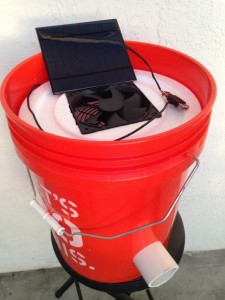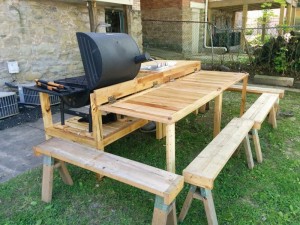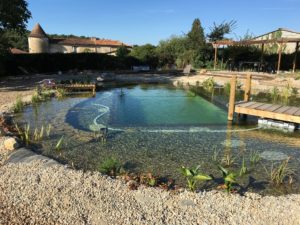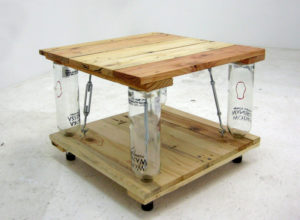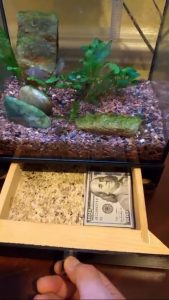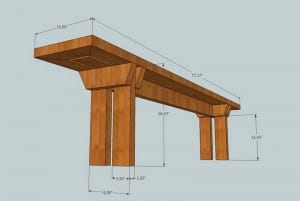Last Updated on March 12, 2024 by teamobn
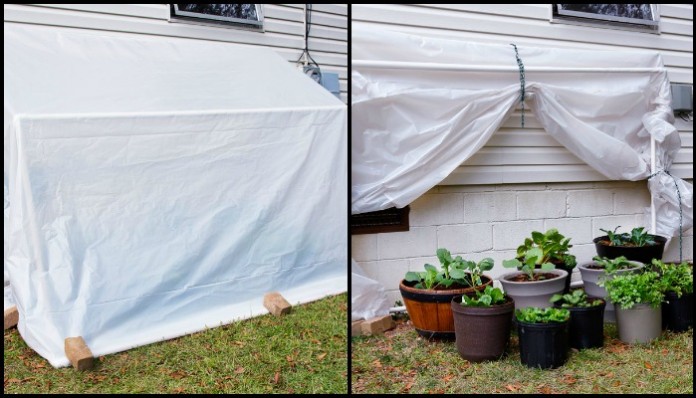
If you’re looking for a greenhouse that is perfect for your small garden, here’s an interesting idea to try. This type of greenhouse is ideal for small spaces, and it can be easily customized to fit your specific needs. Plus, it’s a great way to get started with gardening and learn about plant care.
A greenhouse is a structure with walls and a roof made mostly of transparent material, such as glass, in which plants are grown. These structures range in size from small sheds to very large buildings. A greenhouse protects the plants inside from the outside environment, controlling the temperature and humidity to create an ideal environment for plant growth.
A fold-down greenhouse is a type of portable greenhouse that can be easily set up and taken down as needed. This makes them ideal for gardeners who do not have a lot of space, or for those who want to be able to move their greenhouse around easily. Fold-down greenhouses typically have collapsible frames made of metal or plastic. The coverings are usually made of clear plastic or polyester, which helps to keep the heat and humidity in while still allowing sunlight to reach the plants inside.
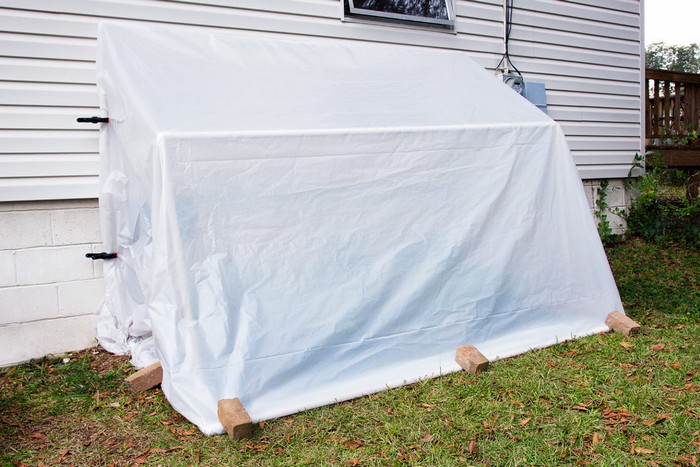
This fold-down greenhouse is a great option for those looking for an easy-to-build and convenient option. Made with PVC pipes and plastic sheeting, this greenhouse is great for anyone looking for a cost-effective way to grow their plants.
The only downside to consider is that this fold-down greenhouse might not last in places where winds blow hard. It is important to take into account the potential for heavy winds when choosing a location for this type of greenhouse. In addition, it is important to be sure that the greenhouse is securely anchored to avoid any damage or injuries that could occur if it were to collapse.
If you are lucky enough to live in an area with favourable weather conditions, then you will love this greenhouse. Not only is it a great way to protect your plants from pests and animals, but it is also a quick and easy solution. You can set it up in no time, and your plants will be safe and healthy in no time.
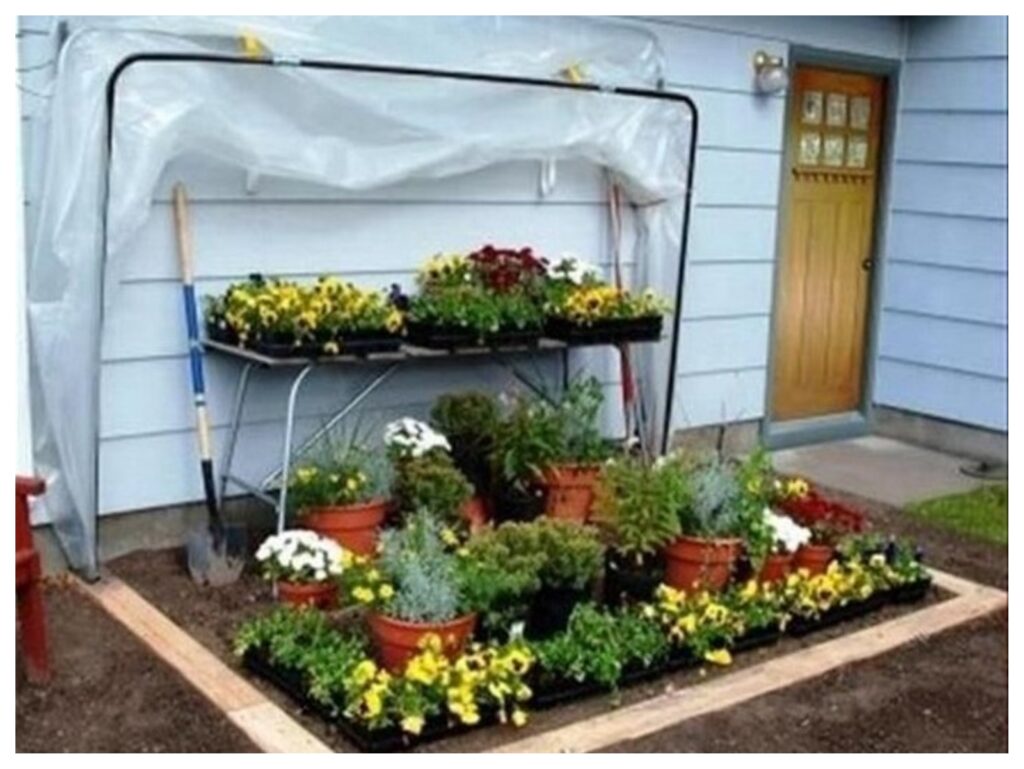
Do you think this fold-down greenhouse will work in your area?
How to Make a Fold-Down Greenhouse
If you are looking for a fun and rewarding gardening project, why not build your own greenhouse? Greenhouses provide the perfect environment for growing delicate plants and flowers and can be built to suit any space and budget.
To get started, head over to the full tutorial from Bonnie Plants. You will learn everything you need to know about building a greenhouse, from choosing the right materials to adding the finishing touches. Once you have got your greenhouse up and running, you will be able to enjoy the fruits (or vegetables) of your labour all year round!
You can also get more greenhouse inspiration by viewing our little fold-down greenhouse album. 🙂
You will need these materials:
- 8 – 1-inch x 10-foot-long PVC Pipes
- 8 – 1-inch Elbow Fittings
- 2 – 1-inch Tee Fittings
- 4 – 1¼-inch Elbow Fittings
- 2 – ¾-inch x 5-foot pieces of Metal Conduit
- 2 – ¾-inch x 5-foot-long pieces of Metal Conduit
- 1 box #8 x ¾-inch Lath Washer Head Screws
- 2 – ¼-inch x 3-inch Bolts
- 25 feet of 12-foot wide 4 mm Plastic Sheeting (UV-rated will last longer)
- 3 – 2- to 3-foot lengths of Coated Light-duty Utility Chain
- 3 Spring Links
- 2 to 4 – 1¼-inch Pipe Straps
- 2 to 3 Plastic-Body Spring Clamps
- several pieces of Bricks or Paver
And these tools:
- Hacksaw / Jigsaw / Miter Saw
- Rubber Mallet / Sledge Hammer
- Drill / Driver
- Spring Clamps
- ¾-inch Soil/Garden Auger Drill Attachment (optional)
Steps:
1. Constructing the Frame
Cut PVC pipes. Using a saw cut the 1-inch PVC pipes into the desired lengths according to your greenhouse’s dimensions. You’ll need four long pieces for the sides and four shorter pieces for the front and back.
Assemble the frame. Connect the PVC pipes using the elbow and tee fittings to create a rectangular frame. Ensure the corners are square and the frame is level.
2. Adding Reinforcement
Install the metal conduit. Insert the ¾-inch metal conduits into the PVC pipes along the top edge of the frame. These conduits will provide additional support and stability to the structure.
Secure the conduits. Use pipe straps to secure the metal conduits to the PVC pipes. Place the straps evenly along the length of the conduits and screw them into place using the lath washer head screws.
3. Attaching the Plastic Sheeting
Cut the plastic sheeting. Lay the plastic sheeting over the frame and cut it to size, leaving some excess on all sides to ensure full coverage.
Secure the sheeting. Use plastic-body spring clamps to secure the plastic sheeting to the PVC frame. Place the clamps along the edges of the sheeting at regular intervals to hold it firmly in place.
4. Adding Hinges and Bolts
Install the hinges. Attach hinges to one of the longer sides of the greenhouse frame. Position the hinges evenly along the length of the frame, ensuring they are aligned properly.
Attach bolts. Drill holes in the corresponding side of the frame and insert bolts through the hinges. Secure the bolts in place with nuts to create a pivot point for the fold-down mechanism.
5. Creating the Fold-Down Mechanism
Attach the chains. Attach coated light-duty utility chains to the top corners of the greenhouse frame using spring links. Ensure the chains are securely fastened and can support the weight of the greenhouse.
Connect chains to the ground. Secure the other ends of the chains to the ground using bricks or pavers. Adjust the length of the chains as needed to achieve the desired angle when folding down the greenhouse.
6. Testing and Adjusting
Test the fold-down mechanism. Carefully fold down the greenhouse to ensure that the mechanism functions smoothly and that the plastic sheeting remains intact.
Make adjustments. If necessary, make adjustments to the chains or hinges to improve the stability and functionality of the fold-down mechanism.
By following these steps, you can create a fold-down greenhouse that protects your plants while maximizing space efficiency. With the ability to fold down when not in use, this greenhouse design is ideal for gardeners with limited space or for those who want a portable option for their gardening needs.
Click on any image to start the lightbox display. Use your Esc key to close the lightbox.![]()

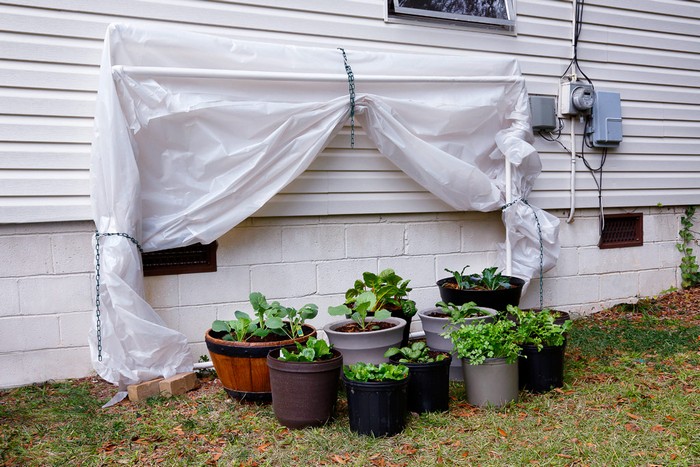
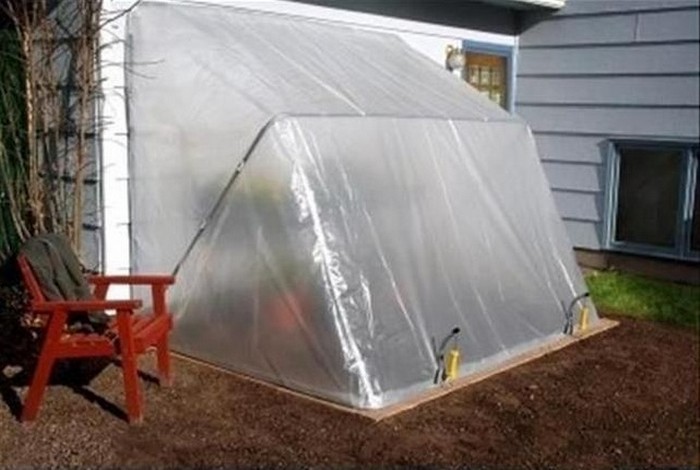
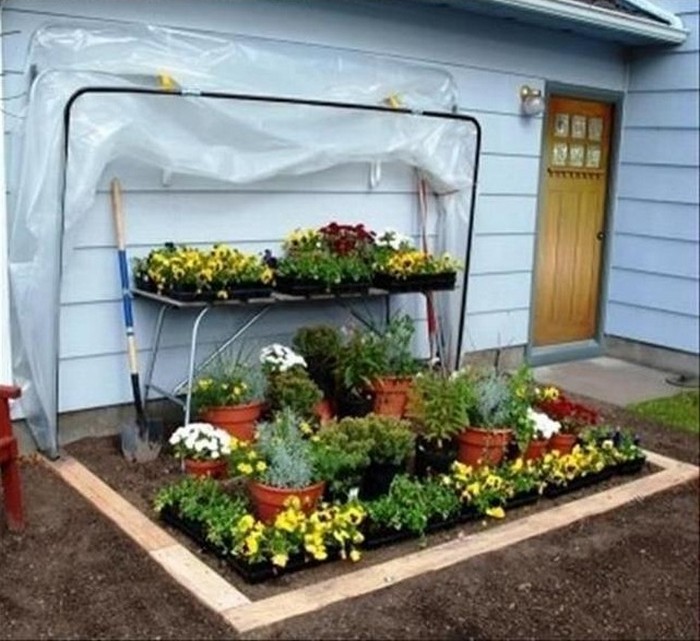
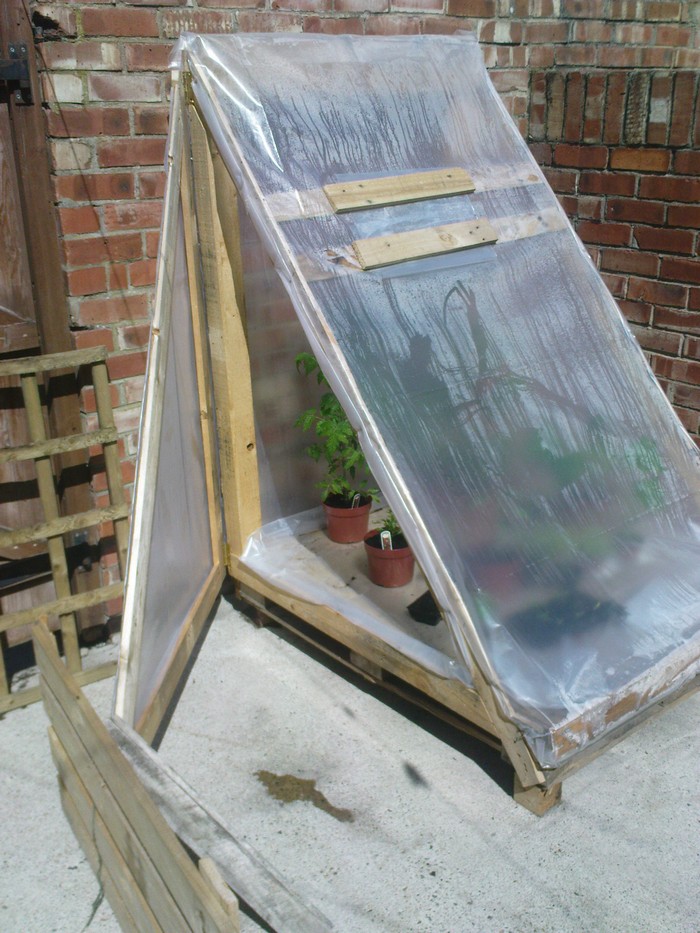
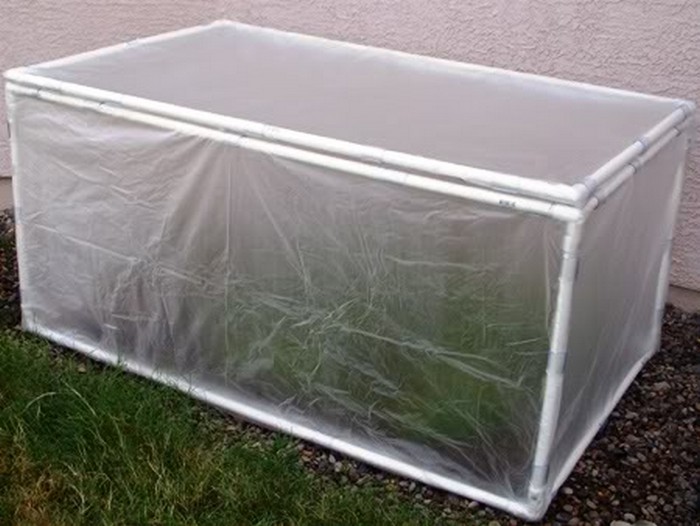
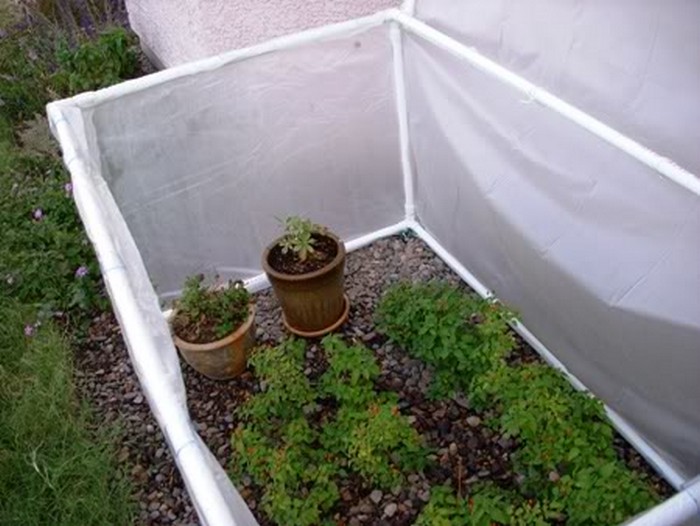
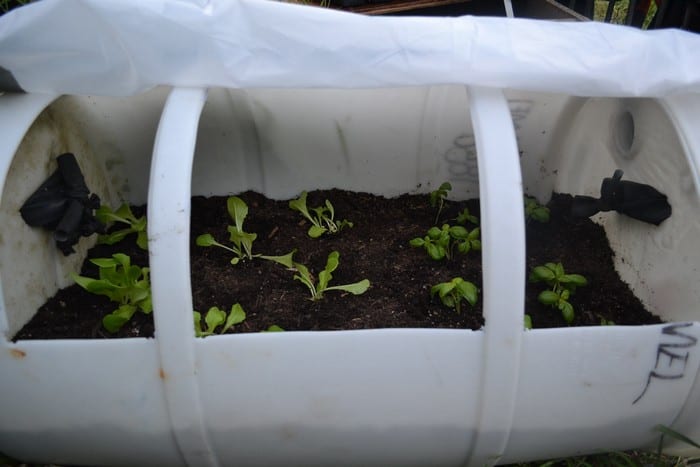
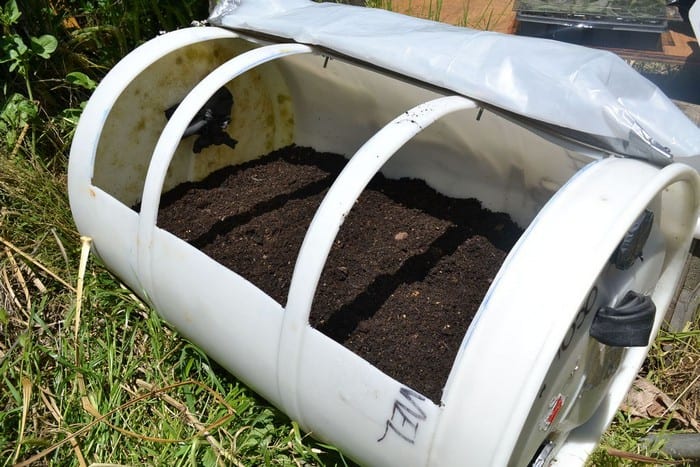
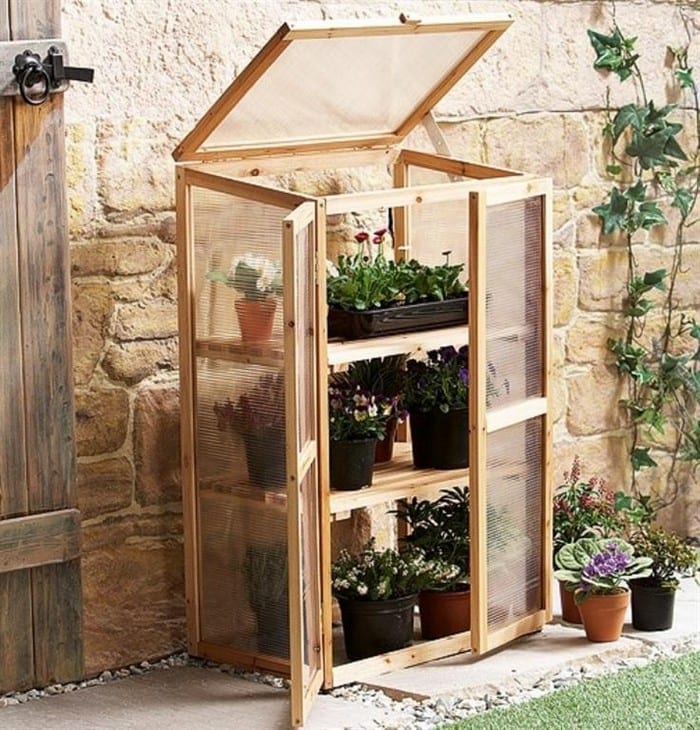
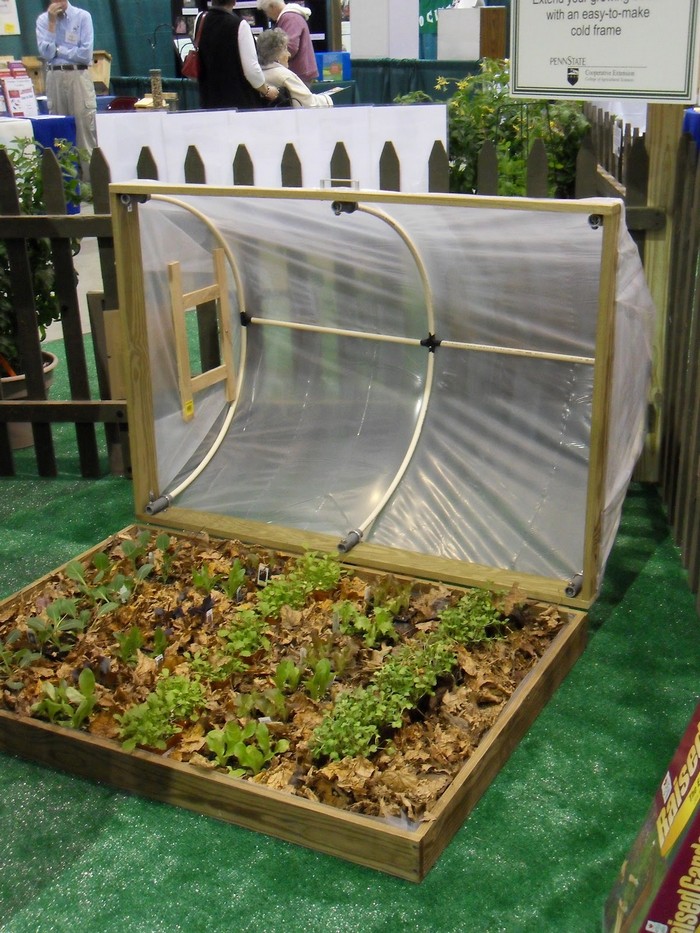

Thanks to Bonnie Plants for sharing tips on how to make a fold-down greenhouse.
To optimize the efficiency and space-saving benefits of a fold-down greenhouse, consider implementing these pro strategies:
1. Smart Design
Customization: Tailor the design of the fold-down greenhouse to your specific needs and available space. Consider factors such as dimensions, materials, and features that will maximize efficiency.
Choose high-quality materials that are durable and suitable for the intended use. Options for the frame may include aluminium, galvanized steel, or treated wood while covering materials could range from UV-resistant greenhouse plastic to polycarbonate panels. Select materials that withstand weather conditions and provide adequate insulation.
Modular Components: Utilize modular components that allow for easy assembly, disassembly, and reconfiguration as needed. This flexibility enables you to adapt the greenhouse to different growing seasons or plant varieties.
2. Functional Layout
Vertical Gardening: Make use of vertical space by incorporating shelves, hanging planters, or trellises inside the greenhouse. This allows you to maximize growing area while minimizing footprint.
Mobile Features: Install wheels or casters on the greenhouse frame to facilitate easy movement and repositioning. This allows you to take advantage of sunlight or shelter plants from adverse weather conditions as needed.
3. Climate Control
Ventilation: Ensure proper ventilation by incorporating windows, vents, or louvres into the design of the greenhouse. This helps regulate temperature and humidity levels, preventing overheating and moisture buildup.
Shade Cloth: Install shade cloth or blinds to protect plants from excessive sunlight during peak hours. This helps prevent heat stress and sunburn, especially for delicate or heat-sensitive plants.
4. Integrated Technology
Automated Systems: Implement automated systems for watering, temperature control, and lighting to optimize plant growth and minimize maintenance. Smart sensors and timers can be programmed to monitor environmental conditions and adjust settings accordingly.
Remote Monitoring: Use smart devices or apps to remotely monitor and manage the fold-down greenhouse, allowing you to stay connected and make adjustments from anywhere.
5. Season Extension
Cold Frames: Convert the fold-down greenhouse into a cold frame during cooler months to extend the growing season for cold-hardy crops. Adding insulation or thermal covers helps protect plants from frost and prolongs harvests.
Heating Options: Install heaters or heat lamps to provide supplemental warmth during colder periods, ensuring plants remain healthy and productive despite fluctuating temperatures.
6. Organization and Maintenance
Storage Solutions: Incorporate storage compartments or racks for gardening tools, supplies, and equipment to keep the space tidy and organized. This streamlines workflow and minimizes clutter.
Regular Maintenance: Establish a routine maintenance schedule to inspect and clean the fold-down greenhouse, checking for damage, pests, or disease. Prompt action helps prevent issues from escalating and ensures optimal conditions for plant growth.
By implementing these pro strategies, you can maximize the efficiency and space-saving potential of a fold-down greenhouse, creating an optimal environment for successful gardening while making the most of limited space.
The Wrap Up
The fold-down greenhouse emerges as a versatile, space-saving solution for gardening enthusiasts, offering a myriad of benefits ranging from efficient space utilization to extended growing seasons. Throughout this guide, you have explored the intricacies of building, using, and maximizing the potential of fold-down greenhouses, shedding light on their practicality and effectiveness in various settings.
Fold-down greenhouses stand as a testament to innovation and adaptability in the realm of gardening and agriculture. They provide a compact yet effective means of cultivating plants, enabling gardeners to overcome spatial constraints and environmental challenges with ease. By harnessing the power of smart design, functional layout, integrated technology, and strategic organization, fold-down greenhouses offer a sustainable and efficient platform for nurturing plant life and promoting self-sufficiency.
As we reflect on the advantages and strategies associated with fold-down greenhouses, it becomes evident that they hold tremendous potential for both novice and experienced gardeners alike. Whether utilized in urban environments, suburban backyards, or rural homesteads, these versatile structures empower individuals to cultivate fresh produce, ornamental plants, herbs, and flowers year-round, regardless of climate or space limitations.
Furthermore, the versatility of fold-down greenhouses extends beyond traditional gardening applications, encompassing a wide range of innovative uses such as seed starting, propagation, overwintering tender plants, and protecting delicate specimens from pests or inclement weather. Their ability to adapt to changing needs and environments makes them invaluable assets for gardeners seeking to optimize their growing potential and explore new horizons in plant cultivation.
In essence, the fold-down greenhouse represents a harmonious fusion of functionality, efficiency, and sustainability in the realm of gardening and horticulture. Its compact footprint, space-saving design, and customizable features make it a practical and versatile solution for modern-day gardeners seeking to cultivate fresh, nutritious produce, cultivate ornamental plants, and connect with nature on a deeper level.
Frequently Asked Questions
1. What materials are commonly used to build fold-down greenhouses?
Fold-down greenhouses can be constructed using a variety of materials, including PVC pipes, metal rods, wood, and greenhouse plastic or PVC film. The choice of materials depends on factors such as durability, cost, and personal preference.
Select materials that can withstand outdoor conditions, including wind, rain, and sunlight. Evaluate the cost of materials and determine the budget for the project. Choose materials that are easy to work with and assemble, especially for DIY projects.
Consider the maintenance requirements of the materials and choose options that are suitable for long-term use. Ultimately, the choice of materials may come down to personal preference and aesthetic considerations.
2. Are fold-down greenhouses suitable for all climates?
Fold-down greenhouses can be adapted to suit different climates, but they are particularly beneficial in regions with mild to moderate temperatures. In colder climates, additional insulation and heating may be required to protect plants from frost and freezing temperatures.
Regularly monitor temperature fluctuations inside the greenhouse using a thermometer or digital temperature sensor. Be prepared to take action if temperatures drop below freezing. Cover tender plants with frost cloth, blankets, or plastic sheeting overnight to protect them from frost damage. Avoid using plastic directly on plants, as it can cause damage from contact with cold surfaces.
3. How do you maintain a fold-down greenhouse?
Regular maintenance is essential to ensure the longevity and functionality of a fold-down greenhouse. This includes cleaning the plastic sheeting, checking for damage or wear, and addressing any issues with the frame or structural components. Additionally, it’s important to monitor environmental conditions and adjust ventilation, heating, or shading as needed.
4. Can you grow all types of plants in a fold-down greenhouse?
Fold-down greenhouses provide a controlled environment that is suitable for growing a wide range of plants, including vegetables, herbs, flowers, and ornamentals. However, it’s important to consider the specific needs of each plant, such as sunlight, temperature, and humidity requirements, when selecting what to grow.
Choose plants that are well-suited to the available sunlight levels in the greenhouse, whether they require full sun, partial shade, or low light conditions. Select those that are adaptable to the temperature range inside the greenhouse and can withstand fluctuations in temperature. Incorporate plants that attract pollinators such as bees and butterflies to promote pollination and enhance biodiversity.
5. Are fold-down greenhouses easy to assemble and disassemble?
Fold-down greenhouses are designed for ease of assembly and disassembly, with most models featuring modular components and simple construction techniques. Basic tools and DIY skills are usually sufficient to complete the assembly process, making them accessible to gardeners of all levels of experience.
6. How long do fold-down greenhouses last?
The lifespan of a fold-down greenhouse depends on factors such as the quality of materials used, environmental conditions, and maintenance practices. With proper care and maintenance, a well-built fold-down greenhouse can last for many years, providing seasons of productive gardening enjoyment. Regular inspection and repairs can help prolong its lifespan and ensure optimal performance.
7. Can you customize your fold-down greenhouse to suit your specific needs?
Yes, one of the key advantages of fold-down greenhouses is their customizable nature. Gardeners can tailor the design, layout, and features of their greenhouse to accommodate their unique gardening goals, available space, and environmental conditions.
Whether it is adding shelves, installing ventilation, or incorporating automated systems, customization options abound to create a personalized gardening oasis.
8. Are fold-down greenhouses suitable for year-round use?
Fold-down greenhouses can be used year-round in many climates, provided that they are properly insulated, ventilated, and heated as needed. In colder climates, additional insulation and heating may be necessary to protect plants from frost and freezing temperatures during the winter months.
However, with proper planning and maintenance, fold-down greenhouses can provide a conducive growing environment for plants throughout the year.

